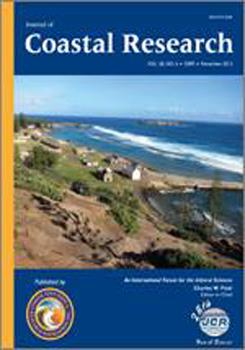Bertels, L.; Houthuys, R.; Deronde, B.; Janssens, R.; Verfaillie, E., and Van Lancker, V., 2012. Integration of optical and acoustic remote sensing data over the backshore-foreshore-nearshore continuum: a case study in Ostend (Belgium).
This research addresses the possibilities of the combined use of airborne hyperspectral imaging spectroscopy, airborne laser scanning, and seaborne sonar to study the sediment dynamics in the back-, fore-, and nearshore continuum. In May 2009, airborne light detection and ranging (LiDAR) and hyperspectral data were acquired at low tide of the beach in Ostend, Belgium. In June 2009, seaborne side-scan sonar and single- and multibeam depth and backscatter data were acquired in the nearshore part of the Ostend coastal area at high tide. Both LiDAR and single- and multibeam data were used to create a topographic reference of the back- to nearshore continuum, with an average vertical accuracy of 10 cm. This reference framework was used, in combination with historical data, to study the morphological evolution over the last few years. Hyperspectral data, optionally combined with LiDAR-derived intensity, slope, and elevation data, were used for sedimentological mapping of the back- and foreshore area. Both multibeam backscatter and side-scan sonar data were used to produce a sedimentary surface facies map of the nearshore area. Because no automatic classification of subtle seabed gradients is yet available, the data were manually screened to produce 12 sedimentary classes. Subsequently, the airborne- and seaborne-derived maps were combined to construct an integrated sedimentological and morphological map of the entire area. This was used to interpret and formulate statements about the sediment dynamics of the area.





